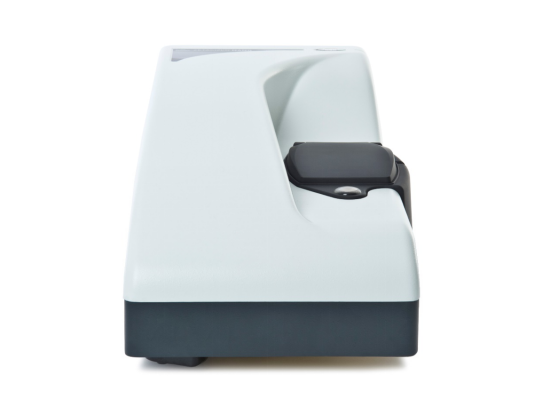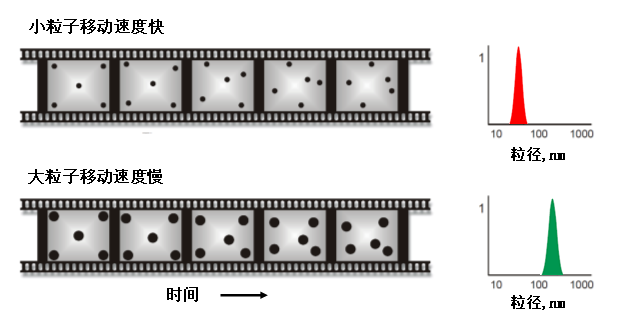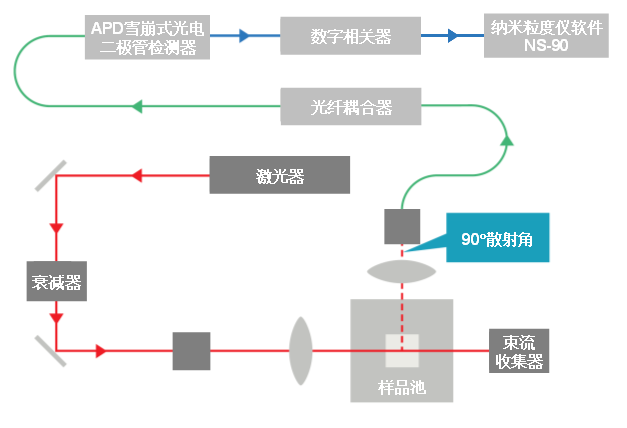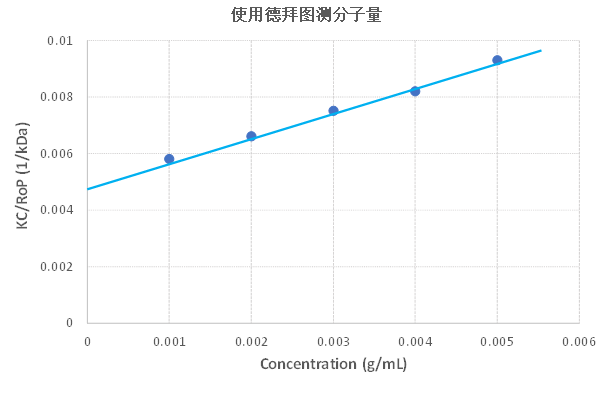Update time:2019-03-27
Purpose: NS-90 nanoparticle size analyzer is a cost-effective characterization technology for nanoparticles. It is suitable for applications requiring high sensitivity of particle size measurement or using the same results as 90 degree scattering angle system. The instrument is suitable for the analysis of emulsion, suspension, protein and other samples.
Product introduction:
NS-90 nanometer particle size analyzer is a leading nanometer particle size analyzer specially developed by Zhuhai Euramerican Instruments Company after the successful launch of TopSizer high-performance laser particle size analyzer in 2014. It continues to introduce and absorb the advanced particle characterization technology of Malvern Panalytical Company and combines the market application characteristics and needs of Chinese users. The instrument uses 90 degree dynamic light scattering technology to measure particle and molecular size, and static light scattering method to measure the molecular weight of protein and polymer; in many domestic brands, it is exclusively equipped with avalanche photodiode (APD) detector, which is much more sensitive than photomultiplier tube detector (PMT); it also uses high-end He-Ne gas laser, coupled with precise internal temperature control technology, and is compact. Closed-light path and advanced software algorithm ensure data repeatability, accuracy and 0.3 nanometer test lower limit; at the same time support SOP standard operation, as well as intelligent evaluation of measurement data, convenient for users to use.

Working principle:
Dynamic light scattering technology:
NS-90 nanoparticle size analyzer uses dynamic light scattering technology to measure particle size and molecular size.
Random Brownian motion of particles in liquids is produced by collision
of solvent molecules around them. Small particles move faster in liquid
than large particles. This movement has been going on all the time, so
if we take a "picture" of the sample motion at a short interval, we can
see how much the particle moves and calculate how big it is. In the same
time, if the displacement is small and the particle position is close,
the particle size in the sample is larger; on the contrary, if the
displacement is large and the particle position changes greatly, the
particle size in the sample is smaller. Dynamic light scattering (DLS)
technique, also known as photon correlation spectroscopy (PCS), is used
to measure particle size by using the relationship between diffusion
velocity and particle size.

NS-90 nanoparticle size analyzer uses 90 degree dynamic light scattering technology, uses photoelectric detector to measure the scattering light intensity fluctuation signal generated by Brownian motion of particles in the sample, then obtains correlation function through digital correlator, and finally calculates particle size and distribution using Stokes-Einstein equation. The diameter of the hard sphere measured by this technique is the diameter of the hard sphere diffused by the measured particles at the same speed.

Static light scattering technology:
NS-90 nanoparticle size analyzer uses static light scattering
(SLS) technology to measure the molecular weight of proteins and
polymers. Static light scattering is a non-invasive technique for
characterizing molecules in solution.
Similar to dynamic light scattering, when laser irradiates particles in
the sample, the particles scatter in all directions. But unlike dynamic
light scattering technology, static light scattering technology is used
to measure the time average intensity of scattered light over a period
of time. Because this time average light intensity can not reflect the
dynamic change of signal with time, it is called "static light
scattering".
Because the scattering light intensity produced by particles is
proportional to the square of the average molecular weight and the
concentration of particles, the molecular weight of protein and polymer
can be determined by static light scattering method. In this measurement
method, the scattering light intensity (kC/R) of a series of samples
with different concentrations is measured and compared with the
scattering light intensity produced by standard substances (such as
toluene) to obtain Debye Plot. The slope of the fitting line in the
Debye diagram is the second Virial Coefficient (A2), and the value of
the fitting line extending to zero concentration is the reciprocal of
the average molecular weight (1/MW). The molecular weight unit is Dalton
or g/mol.

Purpose:
NS-90 nanoparticle size analyzer is a very cost-effective
characterization technology for nanoparticles. It is suitable for
applications requiring high sensitivity of particle size measurement or
the same results as 90 degree scattering angle system. The instrument is
suitable for the analysis of emulsion, suspension, protein and other
samples.
Typical applications:
Chemical products: silica gel, latex, metal colloid, pigment, ink, toner, ceramics
Cosmetics, glazing agents, food and agricultural chemicals and other products in the form of emulsion (emulsion).
Pharmaceutical industry: granularity of fat emulsion, injection, microcapsule, monoclonal antibody and immunoglobulin
Measurement of Protein and Polymer Size

Data examples:

Technical parameters:
[particle size]
1. Measurement range: 0.3-5000 nm (subject to sample)
2. Measurement Principle: Dynamic Light Scattering Method
3. Detection angle: 90 degrees
4. Repeatability error: <1%(NIST retroactive latex standard)
5. Minimum sample volume: 20L
6. Minimum sample concentration 0.1mg/mL (subject to sample)
[Molecular weight]
7. Measuring range of molecular weight: <1000 Da-2*107 Da, estimated by hydrodynamic diameter (dynamic light scattering)
8. Measuring range of molecular weight: <10 000 Da-2 x 107 Da, calculated by Debye diagram (static light scattering)
9. Measurement Principle: Dynamic Light Scattering, Static Light Scattering
10. Minimum sample volume: 20 L (3-5 sample concentrations required)
[System Hardware]
11. Laser source: He-Ne laser with high stability, wavelength 633 nm,
power 4 mW. Fifty mW, 532 nm solid-state lasers are also available.
12. Laser safety: Category 1, meeting CDRH and CE standards
Detector: avalanche photodiode (APD) detector, QE > 50%
14. correlator: sampling time 25ns-8000s, 4000 channels
15. Condensation Control: Dry Air Purge
16. Temperature control range: 0 90 C (120 C temperature control tank is optional)
17. Temperature Control Accuracy: +0.1 degree C
18. Power supply: AC 100-240V, 50-60Hz
19. Power: Maximum 100W
[Weight and Size]
Dimensions: 320mm *600mm *260mm (W *D *H)
21. Weight: 21 kg
[Operating environment]
22. Computer configuration: Intel Core 2 Duo, 4 GB memory, 160G hard disk capacity, display resolution 1440 *900 32bit and above
23. Computer Interface: USB 2.0
Operating System: Windows 7 Pro (32 bit/64 bit), Windows 10 (64 bit)
25. Temperature range: 10 C 35 C
26. Ambient humidity: 10%-90% without condensation
Performance characteristics:
[Advanced Optical System Design]
The Euro-American KeNS-90 nanoparticle size analyzer integrates dynamic
light scattering technology and static light scattering technology in an
instrument. Dynamic light scattering method is used to measure particle
size and molecular size, while static light scattering method is used
to determine the molecular weight of protein and polymer. This
technology requires the stability of the whole system, and every design
element must be optimized to ensure high accuracy and repeatability.
NS-90 is designed with closed optical path to prevent pollution. The algorithm uses the Mie Theory.
Functional Software Optimizes User Experience
Standard operating procedures (SOP) are provided to simplify routine
measurements; to automatically adjust the optimal settings of various
samples; to operate simply, without collimation, correction or
maintenance; and to be intelligent, to automatically determine the
quality of data reports.
[High Performance Detector]
The sensitivity of an avalanche photodiode (APD) detector with high
efficiency is much higher than that of a photomultiplier tube (PMT). The
cost is high but the optimal test performance is guaranteed.
[Research-level digital correlator]
Using high-speed digital correlator, 4000 channels, sampling time is as low as 25 ns.
[Stable laser source and optical system]
A highly stable He-Ne gas laser is used to ensure the repeatability of
the data, with a wavelength of 633 nm and a power of 4 mW. Fifty mW, 532
nm solid-state lasers can also be used for samples that can not be
detected by standard 633 nm lasers. The laser attenuator can be
automatically adjusted in the dynamic range of 300000:1.
[Accurate internal temperature control system]
Independent circulating temperature control tank can be set arbitrarily
in the range of 0 - 90 C. Its control accuracy reaches 0.1 C, which
ensures high repeatability. It can also be equipped with a temperature
control tank of 120 C.
Software functions:
1. Using advanced software technology and interface, the operation is simple.
2. Fully automatic setup and measurement: Instruments can be set up with
the simplest training, including sample pool location, data recording,
analysis and results.
3. Support SOP standard operating procedures to ensure consistency and data repeatability.
4. Complete evaluation of measurement data: The instrument software can
automatically judge the quality of data report according to test
conditions.
5. Printing or screen displaying reports is easy to use; with report
designer, you can customize different reports according to different
needs by selecting graphics and input parameters at the designated
location.
6. Sample data and results are stored in the measurement file for easy data comparison.
7. Data analysis: Data are given in the form of graphs or tables.
Distribution algorithm is suitable for various samples including
monodisperse samples, wide-distributed samples and multi-mode samples.
Support:
Temperature Trend Analysis
- Time Trend Analysis
Trend analysis of selected parameters
- Full Range Statistical Map